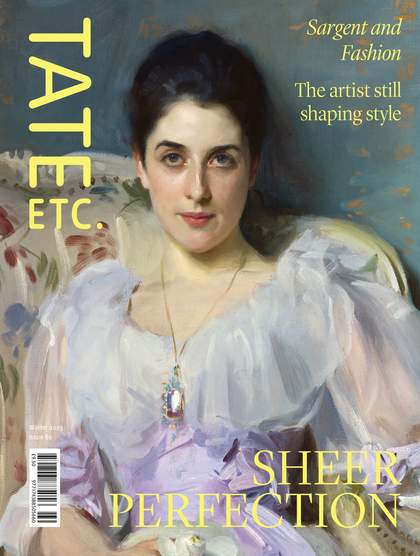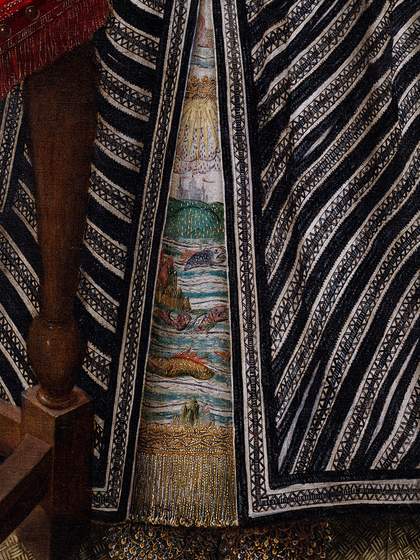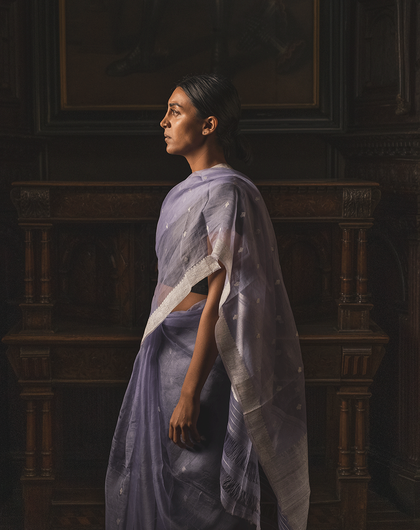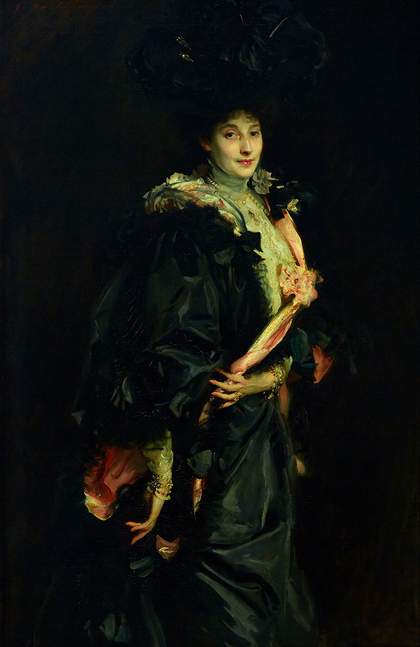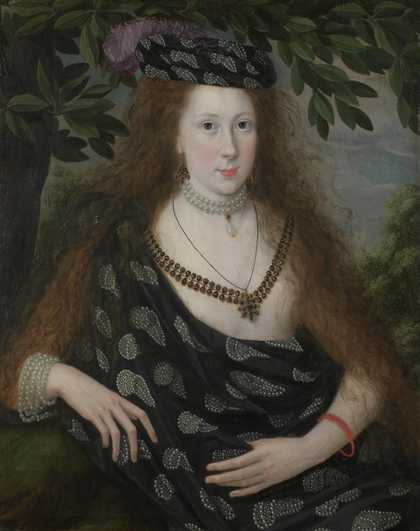
Attributed to Robert Peake
Lady Elizabeth Pope (c.1615)
Tate
Tudors loved them. Their milky, lustrous seduction. Virginal. A rare, natural, wealth. Their poems invoked them. Queen Elizabeth even ordered her corsairs to raid Spanish fleets in pursuit of them. They are the only gemstones produced by living creatures. The rich and royal pinned brooches to their hearts, pearls hanging heavy from their earlobes and dripping from their wrists.
It can take a mollusc three years to mature, two to five years more before it produces a pearl. Centuries before Japanese innovation led to the farming of cultured pearls, these gems represented the luxury of delay. Time passed, waters were crossed. Three ships land in Jamestown in 1607, packed with 144 boys and men – the Virginia Company’s first fleet, funded by London’s venture capitalists. There, on America’s Atlantic coast, English colonists discovered a Land of Pearls. Indigenous populations adorned themselves with an opulence reserved for European elites. In the colonial encounter, the aesthetic realm is the first site of confrontation. The New World gleamed. Spanish conquistadors shared in the thirst, forcing the enslaved to dive into the sea and retrieve pearls. Sharks were a common threat. To free dive is to rely on only the air in one’s lungs.
A feather in the hair signals divinity. It might be worn by a distinguished Lady. Like the dyed turbans of Moors, it’s a showy statement of well-heeled exoticism and claims to power seas away. After all, there were no ostriches in England. A court painter captures these flows of people and resources, settlers and divers, pirates and patrons. Lush foliage frames the painting, as if reflecting freshly discovered abundance, the teeming secrets of an unknown continent. Gems become portals. Like teeth, shoulders can be bared. Fabric drapes around the body like a new mythology.
You can wear the whole world on your breast, and it still wouldn’t be yours.
Lady Elizabeth Pope was purchased in 1955 and is included in the five-century display of British art at Tate Britain.
Momtaza Mehri is a poet and essayist who lives in London. Her first poetry collection Bad Diaspora Poems is published by Jonathan Cape.

